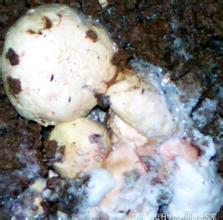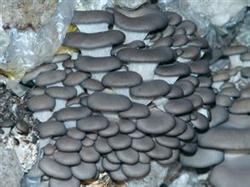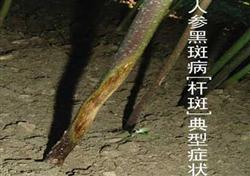Early prevention of dry bubble disease in cultivated Pleurotus ostreatus

Dry bubble disease is one of the main diseases of Pleurotus ostreatus. The pathogen has formed infection in the germ stage of Pleurotus ostreatus, and grows synchronously with the hyphae of Pleurotus ostreatus, but does not show symptoms temporarily, and the mycelium invades in the stage of mushroom emergence. The injured fungus lid appeared dark brown sunken and attached with white powder; the stalk was uneven and malformed; the diseased mushroom had no water swelling, no mucus, no odor, and finally showed dry and withered shape. The pathogen lives in the soil for a long time and spreads widely, so it should be prevented from the treatment of base material. 1. Select high quality and high resistance strains. Limited to the technical conditions, the strain can not be detoxified at present, and the age-appropriate strain with high resistance should be introduced. 2. Disinfect the strain culture room and mushroom shed. Thoroughly clean up the internal and external hygiene, spray the traceless liquid twice, and use phoxim to control insects. 3. Secondary fermentation of base material. The spores germinate in the early fermentation and are easy to be killed in the secondary fermentation, although the cost is slightly higher, but it can be prevented. 4. Growth period management. During the germicidal period, mushroom Shixianling and other agents were sprayed every 3-7 days to inhibit exotic bacteria. During the mushroom emergence period, the conditions of water, air, temperature and light should be strictly regulated, especially the appropriate moisture content of the overlying soil layer and ventilation in the greenhouse should be strictly maintained, and drugs should be sprayed to prevent exotic bacteria. 5. post-morbidity treatment. If the fruiting body is found to have the harm of dry bubble disease, the range of 1-2 meters should be expanded to remove the fruiting body and soil covering materials, and all the tools entering the shed should be soaked in formaldehyde 20 times dilution for 3 hours, and then put into 5% lime water for disinfection; the new overlying soil materials should be treated without trace; blanket spraying in the mushroom shed will remove all diseases without trace; strengthen insect prevention measures; burn or deeply bury the diseased remains and soil covering materials; spray carbendazim on the outside of the shed and walls.
- Prev

Planting and sharing: cultivation techniques of Pleurotus ostreatus
Some time ago, some netizens called and said: there are few Pleurotus ostreatus in the market now, and the price is good. I want to cultivate Pleurotus ostreatus in the greenhouse. But there are some technical shortcomings. Answer: in view of this situation, we suggest to use the method of planting Pleurotus ostreatus in bag. at present, there are many methods to cultivate Pleurotus ostreatus in our country, such as bed planting, border planting, mushroom brick, bag planting, vegetable or farming.
- Next

Identification and Control of Ginseng Diseases
Ginseng blight 1. Symptoms. Caused by infection of Rhizoctonia solani and Fusarium oxysporum. So that the seedlings can not be unearthed, or invade the stem of the seedlings after they are unearthed, at the junction of dry and wet soil 3cm away from the topsoil. The injured site was light yellowish brown, gradually became dark yellowish brown, forming sunken spots, deep inside the stem and rotting, enlarged after disease.
Related
- Fuxing push coffee new agricultural production and marketing class: lack of small-scale processing plants
- Jujube rice field leisure farm deep ploughing Yilan for five years to create a space for organic food and play
- Nongyu Farm-A trial of organic papaya for brave women with advanced technology
- Four points for attention in the prevention and control of diseases and insect pests of edible fungi
- How to add nutrient solution to Edible Fungi
- Is there any good way to control edible fungus mites?
- Open Inoculation Technology of Edible Fungi
- Is there any clever way to use fertilizer for edible fungus in winter?
- What agents are used to kill the pathogens of edible fungi in the mushroom shed?
- Rapid drying of Edible Fungi

